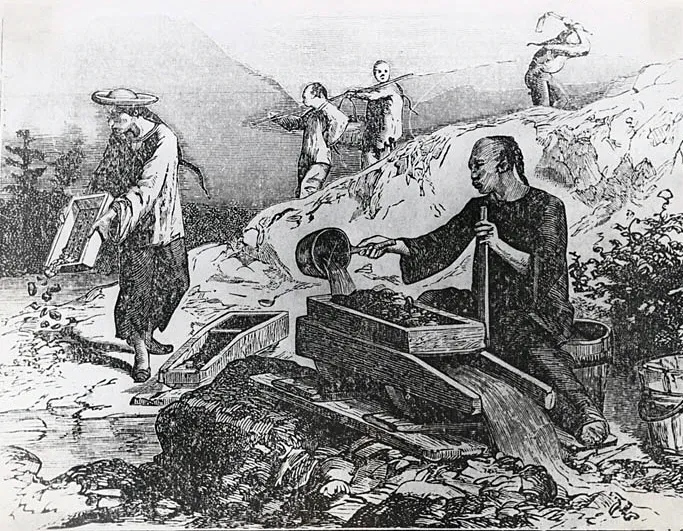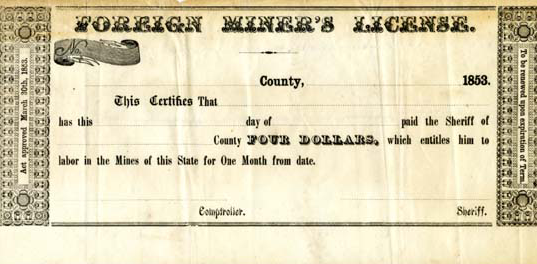Cost of Expanding Frontier:
Chinese Laborers in the Construction of the Transcontinental Railroads
Seeking Gold
"In the second reign year of Haamfung, a trip to Gold Mountain was made.
With a pillow on my shoulder, I began my perilous journey.
Sailing a boat with bamboo poles across the seas, Leaving behind wife and sisters in search of money,
No longer lingering with the woman in the bedroom, No longer paying respect to parents at home."
~ CANTONESE FOLK SONG, middle 1800s
Attracted by the Gold Rush, Chinese immigrants began to migrate to the United States. The immigrants were mainly from Canton, the Chinese province near Hong Kong, which was the departure port to the States. In 1850, an estimated 15,000 Chinese miners resided around the Gold Mountains. The Chinese yielded higher profits among themselves by mining together in large groups. Eventually, the upsurge of Chinese miners and their huge profits caused white outrage, which eventually promoted the legislation of a Foreign Miners Tax in 1852, marking further discrimination against Chinese.

An image demonstrating Chinese miners working in large groups. (Open Rivers)

An image of the Foreign Miner's License, which was only offered to the foreign miners who paid 20 dollars of tax for the permission of mining. (SHEC)
Many of the first-arrived Chinese were then hired to construct the California Central Railroad in 1858 and the San Jose Railroad in 1860. The dozens of workers on these projects proved to Central Pacific that they were capable of completing laborious physical work.